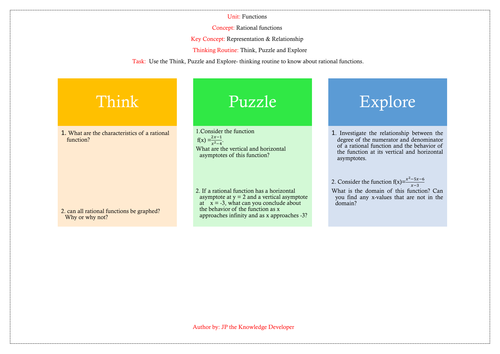
What do we know about rational functions? - This routine helps us to activate our prior knowledge about rational functions, which are functions that can be expressed as a ratio of two polynomials.
What are the key features of rational functions? - This routine helps us to identify the important characteristics of rational functions, such as asymptotes, intercepts, and the behavior of the function as the input variable approaches positive or negative infinity.
How do reciprocal functions relate to rational functions? - This routine helps us to make connections between rational functions and their reciprocal functions, which are functions that can be expressed as 1 over the original function.
What is the general form of a reciprocal function? - This routine prompts us to recall the general form of a reciprocal function, which is y = 1/x.
How do the graphs of rational and reciprocal functions differ? - This routine encourages us to compare and contrast the graphs of rational and reciprocal functions, noting similarities and differences in their behavior.
What real-world situations can be modeled using rational and reciprocal functions? - This routine prompts us to think about real-world scenarios that can be described using these types of functions, such as the spread of disease or the movement of celestial bodies.
What are some common misconceptions about rational and reciprocal functions? - This routine helps us to identify common misunderstandings or errors that people may have when working with these functions.
What strategies can we use to solve problems involving rational and reciprocal functions? - This routine prompts us to think about problem-solving techniques, such as graphing or algebraic manipulation, that can be used to analyze and solve problems involving these functions.
How can we apply our understanding of rational and reciprocal functions in other contexts? - This routine encourages us to reflect on the broader applications of our knowledge, such as in fields like engineering, economics, or physics.
Something went wrong, please try again later.
This resource hasn't been reviewed yet
To ensure quality for our reviews, only customers who have purchased this resource can review it
Report this resourceto let us know if it violates our terms and conditions.
Our customer service team will review your report and will be in touch.
